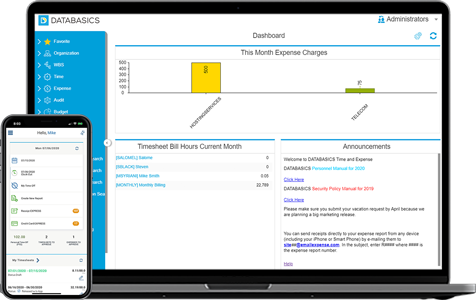
Use Microbudgeting to Work Smarter and Make Better Decisions
A surefire way to make eyes roll in your next meeting is to bring up budgeting. “Here we go again,” people think. Budgeting’s bad reputation is well deserved. In too many instances, budgeting is beset by wishful thinking, erroneous assumptions, inflexibility, make-work analysis and ultimately irrelevance. People end up ignoring budgets because the numbers can’t keep up with the pace of change.
So, does budgeting have any redeeming value? Is there a way of budgeting that makes sense in today’s business environment? We believe the answer is yes, but the key is to think small. The days are gone where the cost of paper clips in a mail room are rolled up to an enterprise bottom line. In a kind of reverse Chaos Theory (you know, where a butterfly beating its wings causes a hurricane), Big Budgeting assumes that by exercising absolute control from the top down to the lowest level of activity, corporate managers can engineer financial results with the efficiency of an assembly line.
Small budgeting, or “microbudgeting,” bears little resemblance to its distant Fortune 500 relations. Its purpose is to keep track of something of interest because it is important in itself, or because it is an indicator of something else that would be difficult to track directly. The budget for the activity does not have to be a limit; it can be a baseline.
a microbudget can be used like a traditional, enterprise KPI (Key Performance Indicator), but microbudgets can also be used to measure and control activity at any level within an organization.
For example, DATABASICS maintains a microbudget of customer expense report filings from before the pandemic to compare to subsequent volumes. This serves remarkably well as an indicator of market conditions. It is simple, easy to maintain and is far more cost effective than an alternative like consulting services or trying to analyze the interplay of variables that “market conditions” represents. Here a microbudget is used like a traditional, enterprise KPI (Key Performance Indicator), but microbudgets can be used to measure and control activity at any level within an organization.
Project management can particularly benefit from microbudgets. A construction company might want to monitor the number of flights to a project site comparing weekly volumes to baseline numbers from prior periods. This would not necessarily be about travel spend restrictions. Its point might be to provide a heads-up regarding problems with the project, under the assumption that a rash of flights might suggest “firefighting” whereas a fall-off in flights may indicate potential relationship issues with client.
microbudgeting isn’t always about keeping track of money. It’s mainly about working smarter and using numbers to make better decisions.
A microbudget does not attempt to manage more than one thing. When you add the complexities of inter-relationships and roll-ups, you radically increase the risk that your budget will become obsolete as the need for maintenance outstrips the capacity (or the will) to perform it. Microbudgeting is something you can do by yourself with surprisingly little effort. Remember that it isn’t always about keeping track of money. It’s mainly about working smarter and using numbers to make better decisions.

If your company uses DATABASICS Time & Expense products, microbudgeting capabilities are built into our system. Check out how microbudgeting can better serve you and your organization.
DATABASICS is driven to meet the most demanding time and expense management challenges through a combination of deep expertise, next-gen technology, and a focus on the unique needs of each customer. Powered by decades of experience, our team delivers world-class time and expense management solutions that are the right choice for today and easily adapt to the uncertainties of tomorrow.
Subscribe to our blog
Recent Posts
Posts by Topics
- Expense Management Software (125)
- DATABASICS (69)
- Time Tracking Software (45)
- Leave Management System (26)
- P-Cards (9)
- Home Healthcare (8)
- Government Contractors (7)
- Nonprofit Organizations (7)
- International Development (6)
- Receipt Management (6)
- Advanced OCR (2)
- CROs (2)
- Staffing Agencies (2)
- Vendor Invoice Management (2)
- Audit Management Software (1)
- Construction (1)
- Field Service Management (1)
- Integration (1)
- Microsoft Dynamics (1)
- Oracle NetSuite (1)
- Partnerships (1)
- Professional Services (1)
Read on

DATABASICS In Review: 2025's Top Innovations & Most Popular Content
Read Now
Time & Expense Year-End Preparation & New Year Kickoff To-Do List
Read Now
Combating AI-Generated Receipt Fraud with Spend Control
Read NowIRS Mileage Rate 2026 Predictions: Trends, History, EV Costs, and How Companies...
Read Now
DATABASICS Wins Silver In Best In Biz Awards 2025: Celebrating Excellence In...
Read Now
Why DATABASICS Time & Expense Is Becoming the Central Hub for Enterprise ERP,...
Read Now
Subscribe to Our Blog
Subscribe to our blog and get the latest in time tracking and expense reporting news and updates.